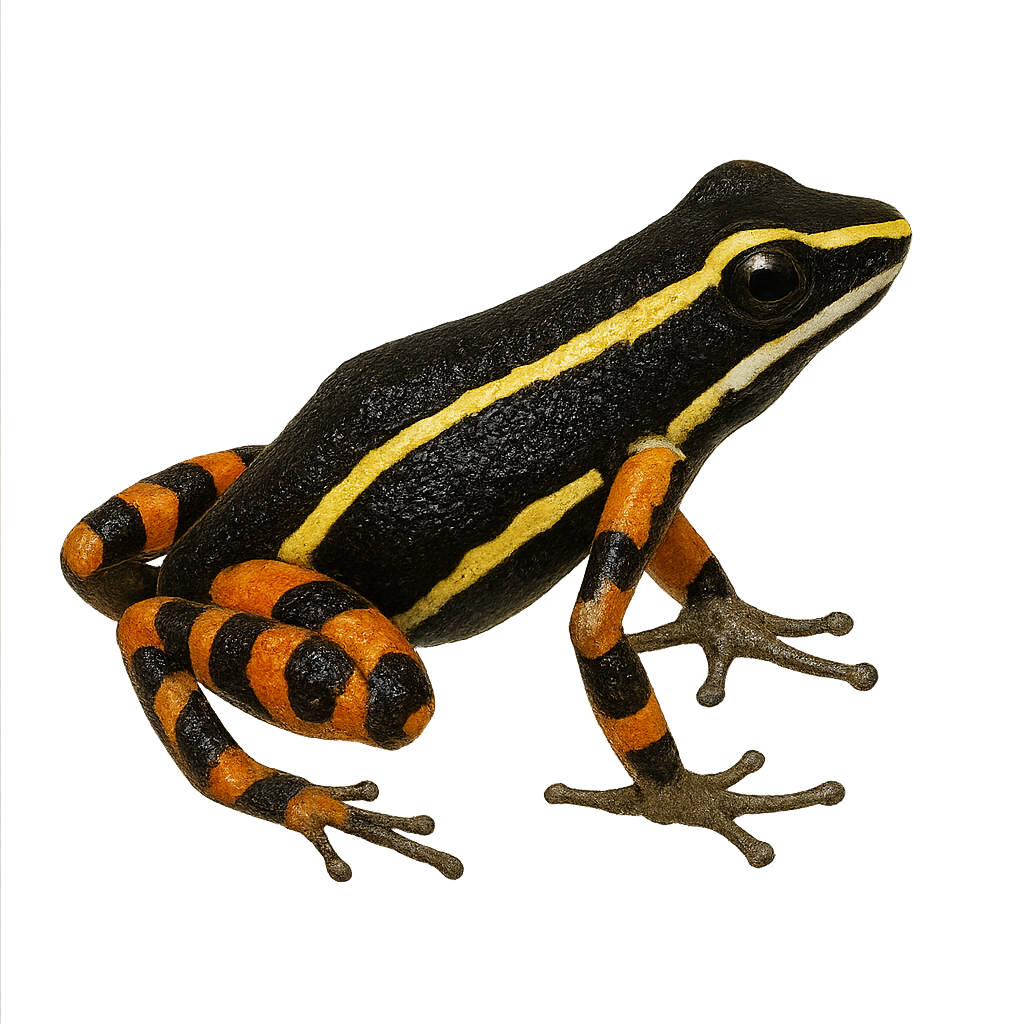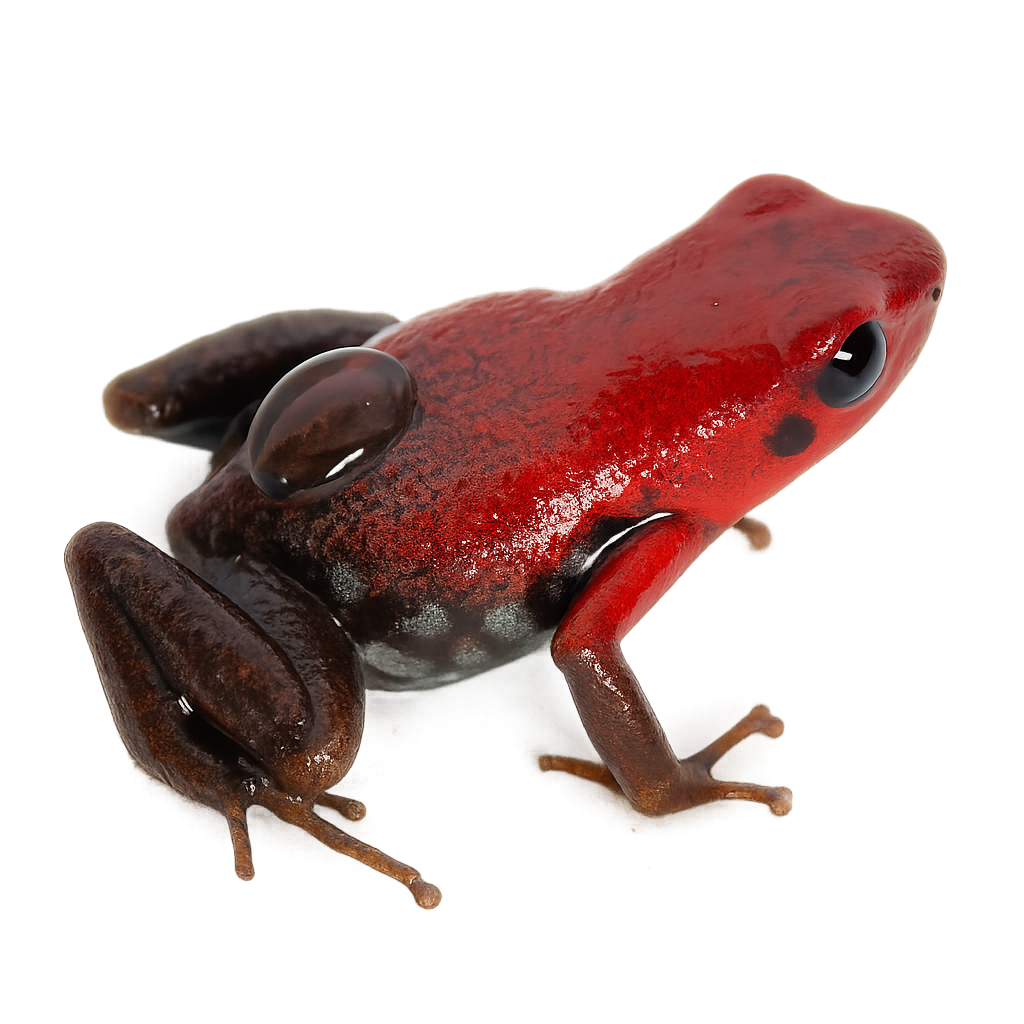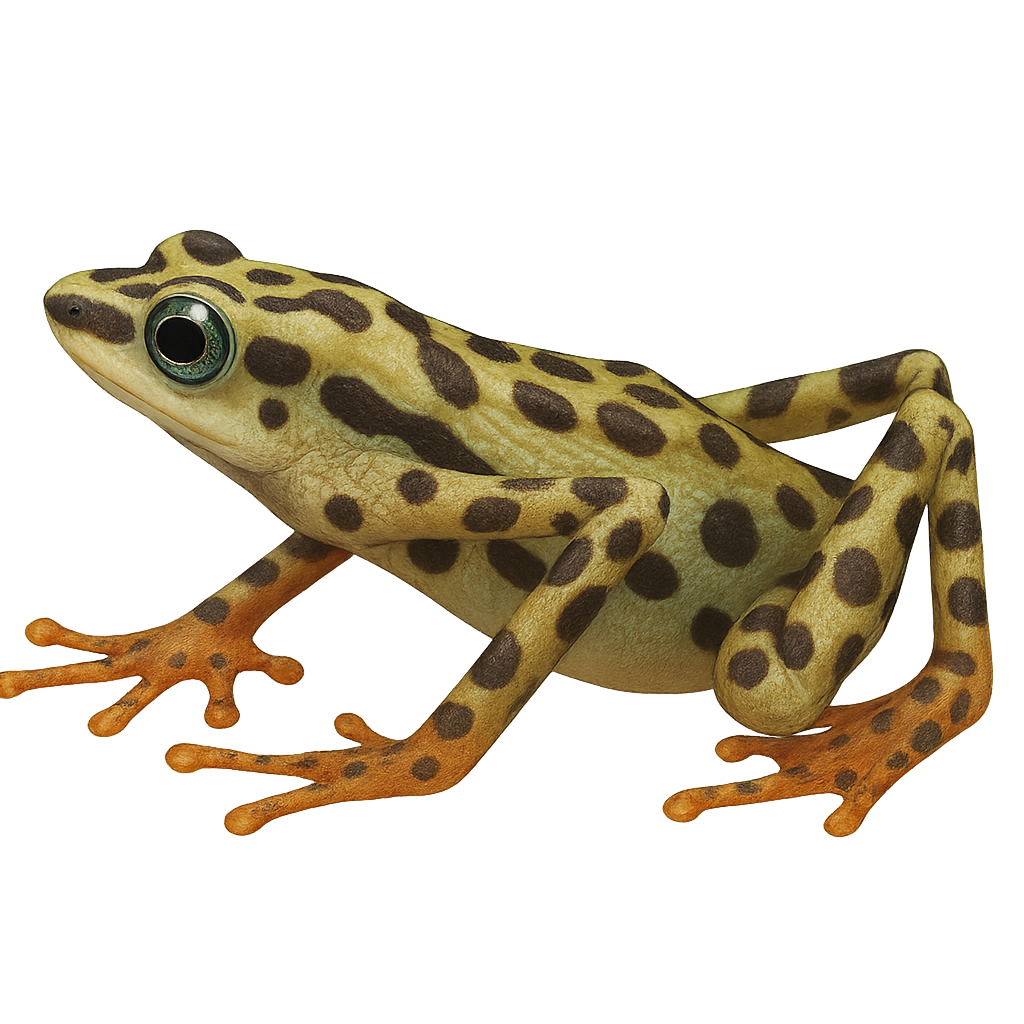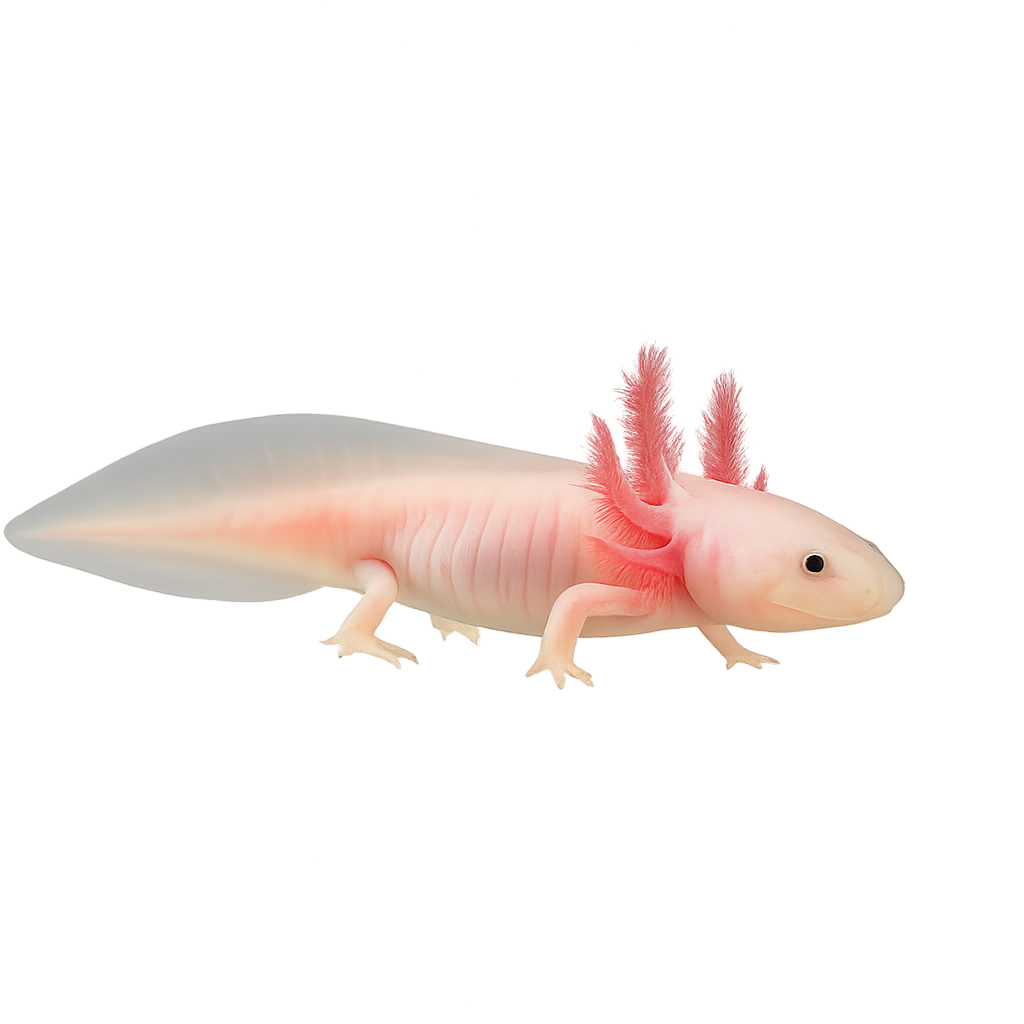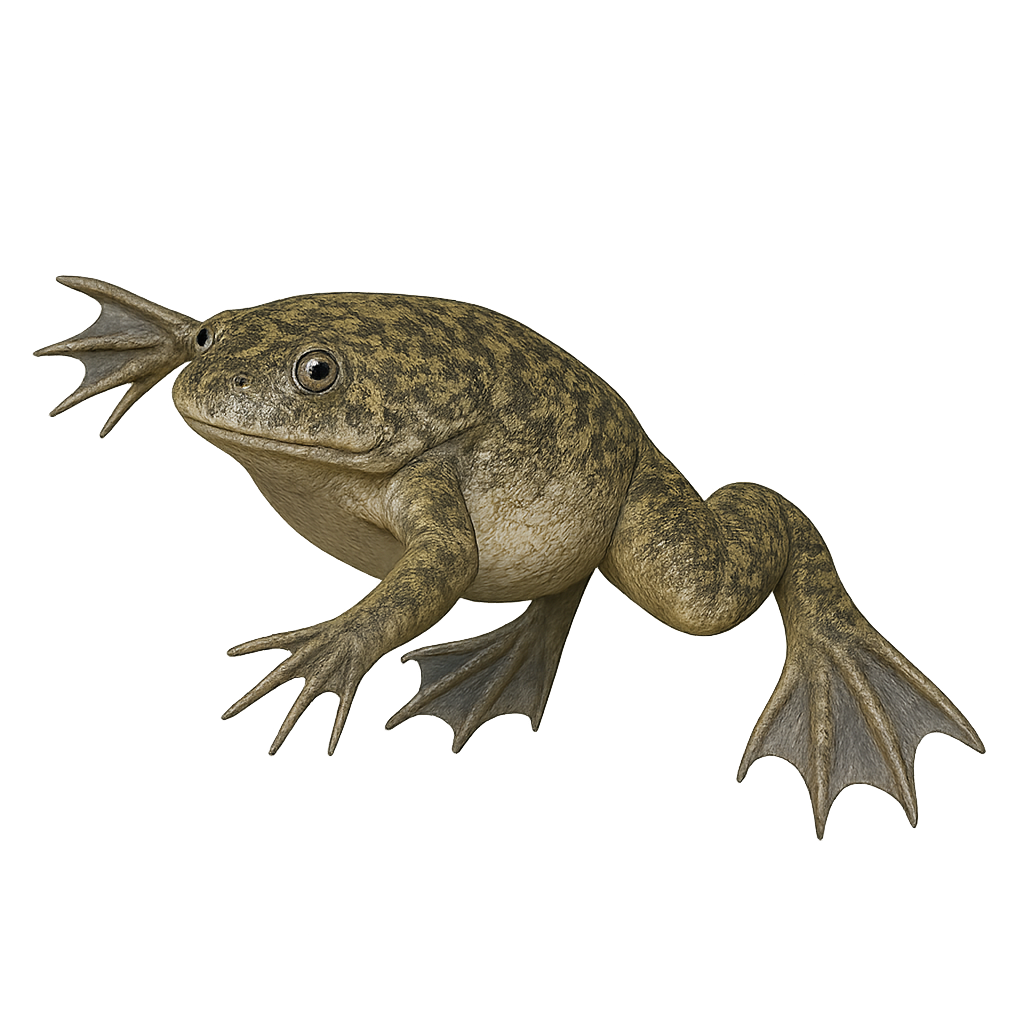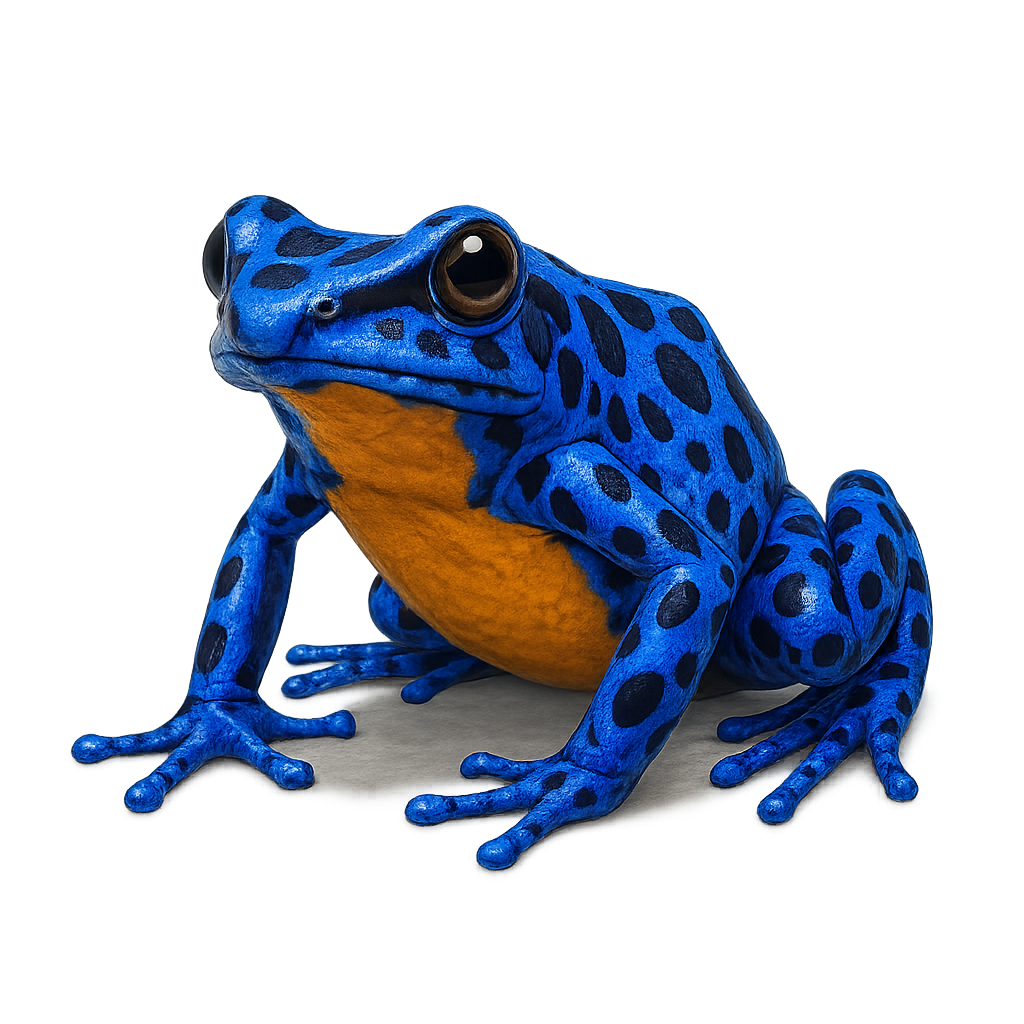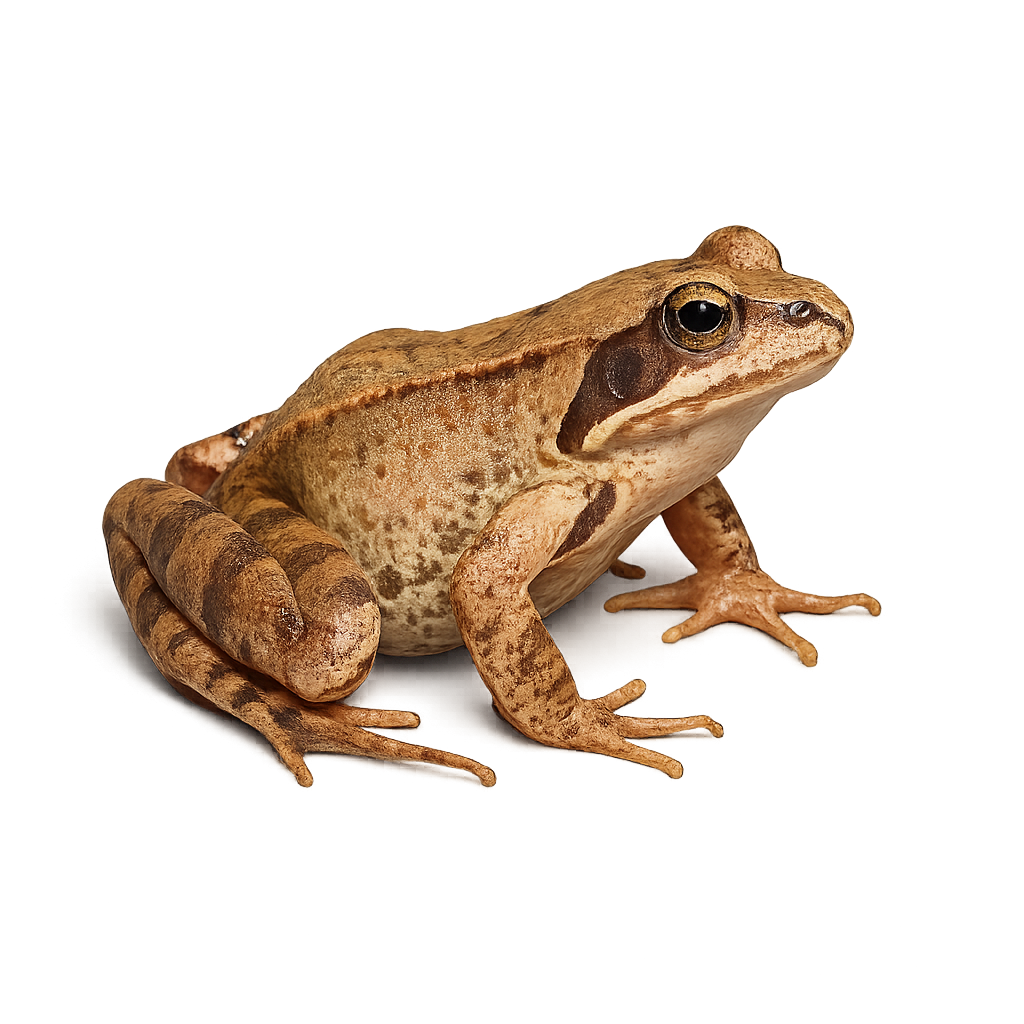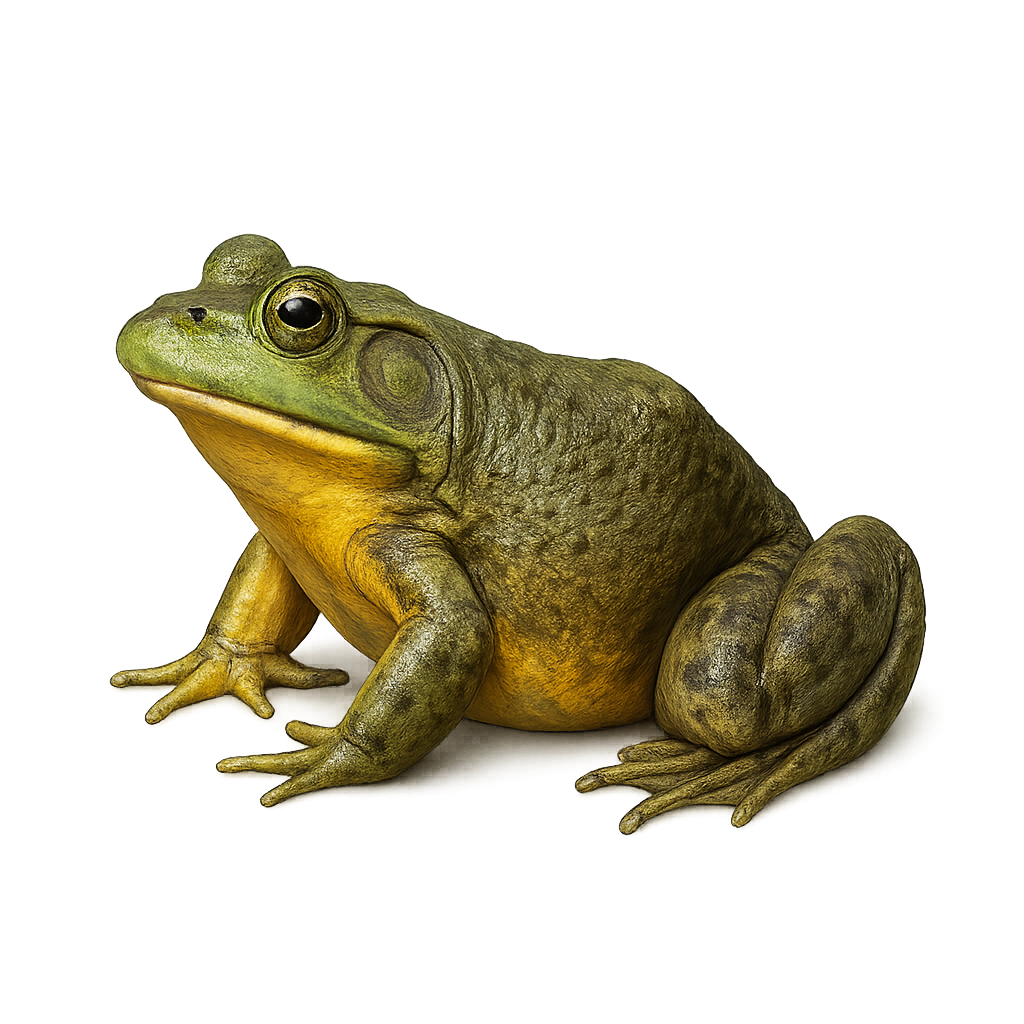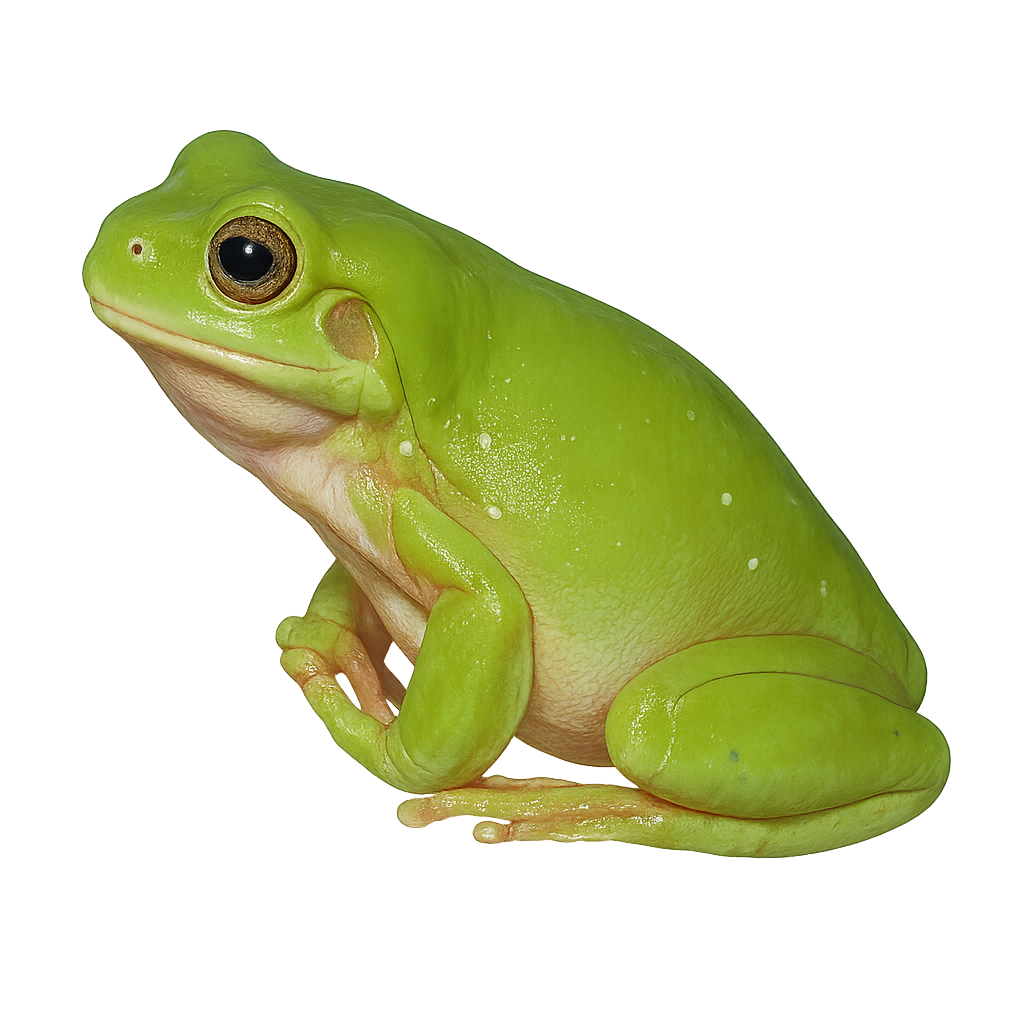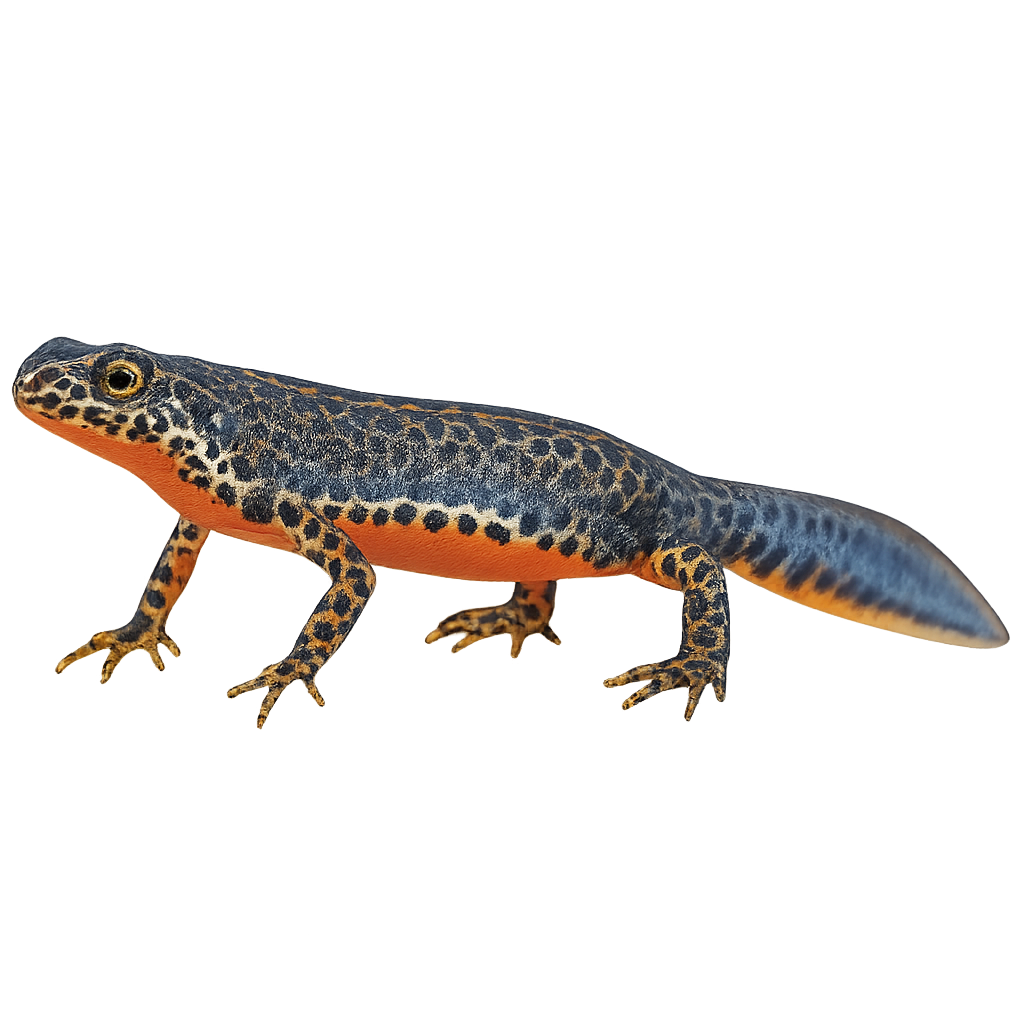The Ameerega braccata is a captivating species belonging to the Dendrobatidae family. Native to the tropical rainforests of South America, it is renowned for its vibrant colors and intriguing behavior. This diurnal species thrives in humid environments, such as undergrowth and areas near water bodies, and primarily feeds on small insects and invertebrates. Although its conservation status is not currently alarming, deforestation and habitat loss pose potential threats. Reproduction typically occurs during the rainy season when conditions are optimal for tadpole development.
The Andean poison frog is a small, brightly colored frog, predominantly black with red or yellow spots, inhabiting the humid tropical forests of Colombia. Measuring about 2 to 3 cm, this species is known for its toxic skin, a natural defense against predators. It primarily feeds on small insects and arthropods. Males are territorial and use vocalizations to attract females and ward off rivals. Their reproduction involves parental care, with the male carrying tadpoles on his back to suitable water points. This species is threatened by deforestation and habitat loss, leading to its classification as vulnerable by the IUCN.
The Atelopus balios is a species of toad belonging to the Bufonidae family. This toad is endemic to Ecuador, where it primarily inhabits humid montane forests. It is characterized by its smooth skin and bright colors, often a mix of green, yellow, and black, which allow it to blend into its natural environment. Unfortunately, this species is critically endangered due to habitat loss, pollution, and fungal diseases such as chytridiomycosis. Conservation efforts are crucial to ensure the survival of this unique species.
The Axolotl is a fascinating species of amphibian native to lakes around Mexico City, Mexico. Unlike most other amphibians, the Axolotl retains its juvenile form throughout its life, a phenomenon known as neoteny. It is famous for its exceptional ability to regenerate parts of its body, including limbs, internal organs, and even its heart. It has a distinctive appearance with its pale pink skin and external gills, giving it the appearance of a small aquatic dragon. The Axolotl primarily lives in cold, deep waters of lakes, where it feeds on small invertebrates.
The Amazonian Poison Frog, Ranitomeya amazonica, is a small, brightly colored frog native to the Amazon rainforest. Known for its vivid colors, often a mix of blue, black, and yellow, it warns predators of its toxicity. This species typically measures between 15 and 20 mm in length. It primarily inhabits humid tropical forests, feeding on small insects. Amazonian Poison Frogs are diurnal, active mainly during the day. Their reproduction involves laying eggs in aquatic microhabitats, often in bromeliads. Although their conservation status is not of concern, habitat destruction remains a potential threat.
The Anthony's Poison Arrow Frog, or Epipedobates anthonyi, is a small, brightly colored frog native to the humid tropical forests of Ecuador and Peru. Known for its vivid and toxic skin, it serves as a defense mechanism against predators. Measuring about 2 to 3 cm, this frog displays bright color patterns, often red and green, warning of its toxicity. It primarily inhabits moist undergrowth and feeds on insects and other small invertebrates. Although its population is stable, it faces threats from deforestation and habitat loss. Its reproduction involves eggs laid on the ground, which males then transport to water bodies for hatching.
Xenopus laevis is a fully aquatic amphibian native to sub-Saharan Africa, identifiable by its smooth olive skin and four claws on the front feet. It inhabits ponds, pools, and ditches of still water, feeding on invertebrates and small fish with its fast, sticky tongue.
The Azureus Poison Dart Frog is a brightly colored and striking species, known for its vivid blue color that varies in intensity. Native to the humid tropical forests of Guyana, Suriname, and Brazil, it is famous for its camouflage abilities and skin glands that secrete potent toxins, used for defense against predators. This frog is primarily terrestrial and lives in areas near streams and swamps, where it feeds on insects and other small prey. Due to its coloration, it serves as a warning signal to predators. It is primarily diurnal.
The Anchicayé Poison Frog, Oophaga anchicayensis, is a species of frog endemic to the humid tropical forests of Colombia. Known for its bright coloration, ranging from red to blue, it serves as a warning signal to potential predators. This small frog typically measures between 2 and 3 cm in length and feeds primarily on small insects and arthropods. Like other members of the Dendrobatidae family, it possesses potent skin toxins used as a defense mechanism. The Anchicayé Poison Frog is often found in moist undergrowth, moving slowly in search of food. Its reproduction is complex, involving the transport of tadpoles by parents to suitable aquatic sites.
The agile frog is a small terrestrial frog of 6–8 cm with light brownish-red dorsal coloration and pale throat, equipped with strong hind legs. It inhabits open woodland edges, damp meadows and hedgerows, feeding on insects and spiders. During the breeding season, males call from the water’s edge to attract females into shallow water.
The American Bullfrog, Lithobates catesbeianus, is a species of frog native to North America. Known for its large size, it can reach up to 20 cm in length and weigh over 500 grams. Its skin is typically green or brown with darker spots, and it has powerful hind legs adapted for jumping and swimming. This frog is often found near stagnant water bodies like ponds, marshes, and lakes. It is famous for its loud, deep call that resembles a bull's bellow, hence its name. An opportunistic feeder, it consumes a variety of insects, small fish, and even small birds and mammals.
The Alto de Buey Poison Frog is a small, brightly colored frog endemic to the tropical forests of Colombia. Its skin features vivid red and black hues, serving as a natural warning of its toxicity. This species is primarily terrestrial and is often found on the moist forest floor, where it feeds on small insects. It plays a crucial role in the ecosystem by regulating insect populations. Unfortunately, it is threatened by deforestation and habitat loss. Its reproduction is complex, involving parental care where adults transport tadpoles to water bodies.
Litoria dayi, commonly known as the Australian Lace-lid, is a tree frog species endemic to Australia. It is characterized by its smooth skin and bright green coloration, often with brown spots. This frog is primarily nocturnal and prefers humid tropical rainforests, where it hides among leaves and branches. Known for its distinctive call, it uses this to attract mates during the breeding season. Although generally discreet, it can be observed near water bodies where it breeds. Unfortunately, Litoria dayi is threatened by habitat loss and diseases, leading to a decline in its population.
The Litoria caerulea, commonly known as the Australian Green Tree Frog, is a species of arboreal frog native to Australia and New Guinea. It is easily recognizable by its smooth, shiny skin, which is typically emerald green, although some may exhibit bluish hues. This frog is known for its longevity, living up to 16 years in captivity. It has adhesive discs on its fingers, allowing it to climb vertical surfaces with ease. The Australian Green Tree Frog is often found in humid areas, rainforests, and urban gardens. Its docile nature makes it a popular pet.
The Alpine salamander is a terrestrial amphibian of the Alpine arc, with a shiny black body and short limbs. It inhabits humid montane forests and alpine meadows above 700 m, feeding on insects and small invertebrates. During the breeding season, males and females meet on damp ground to mate, without returning to water.
The Alpine newt is a small urodele amphibian, 9–13 cm long, with a bright olive back and orange belly. It inhabits ponds, pools, and wooded wetlands across temperate Europe. During the breeding season, males develop a colored tail crest and perform a nuptial dance to attract females.


